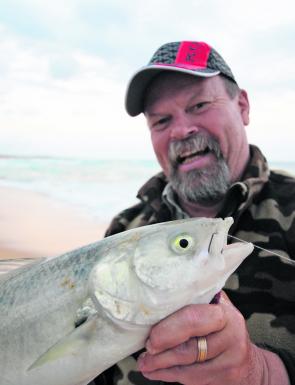Over the last few issues we’ve looked at hooking, fighting and landing fish and covered the basics of correctly using gaffs and landing nets. Now, before we move on to handling the catch, it’s time to briefly recap.
As I explained in this column a few months ago, lots of the trophy fish that escape capture and become fodder for ‘one that got away’ stories are lost in either the first or last seconds of battle. Very often, anglers become quite adept at handling smaller, run-of-the-mill fish, but when something larger or more powerful comes along, their game plans fall apart and it all goes terribly wrong.
Incorrectly set drags are a common cause of broken lines and pulled or straightened hooks, especially in the opening rounds of the engagement. That overly-tight drag setting mightn’t matter too much when you’re simply cranking in smaller fish, but as soon as a big, strong opponent climbs on, you can bet it will cause serious problems. This is a good reason to regularly check your drag setting and adjust it if necessary (to a pressure of around a quarter of the line’s stated breaking strain). But remember: if in doubt, always err on the lighter side.
The other high-risk period in any big fish encounter is that moment when your opponent finally swims into view or splashes on the surface near the end of the fight. At this point, it’s natural to feel an overpowering surge of excitement, accompanied by a strong desire to quickly haul the prize catch aboard or up onto the bank. However, as I’ve repeatedly stressed in the last few columns, this urge can so easily result in disaster!
Successfully landing larger fish on a regular basis depends on two vital factors: having a game plan and keeping a cool head. The bigger the fish and the lighter the gear you’re using at the time, the more important these two key elements become.
Having a game plan is about trusting every knot you tie, setting and regularly re-checking that drag, and doing a little bit of creative visualisation in your head as you rig up and start to fish. By that, I mean imagining what it might be like when you hook something big. What will you do? Where is the fish likely to run, and how will you react when it does? Where will you eventually try to lead the fish to, and how will you get it out of the water when it arrives at that end point?
Interestingly, the second key to success — keeping your cool — is very much dependent upon the first: having a solid game plan. The fact is, you’re much less likely to panic and make mistakes if you’ve acted out a battle plan in your head well before you actually hook that big one.
I simply can’t stress enough the importance of trying to keep a lid on your excitement level in the heat of battle, but I also know that this is much easier said than done! Keeping a cool head during a big fish encounter is one of those things that comes more naturally with experience, but the truth is that most of us don’t get anywhere near enough practice in our day to day fishing. Big fish aren’t that common. That’s why thinking about the potential scenario in advance and being mentally prepared to hook the best fish of your angling life every single time you cast a line is an invaluable exercise… Make it a habit!
1
Hooked up to a strong fish in the surf. Note how Starlo keeps the rod reasonably high to act as a shock absorber.
2
Playing the fish calmly and using the surf break to help wash it in.
3
Almost got him! Let the next wave bring the fish higher up the beach.
4
Gotcha!
5
A lovely Australian salmon on light tackle.
6
A big bream beside the boat… Now, how best to land it?
Reads: 1536









